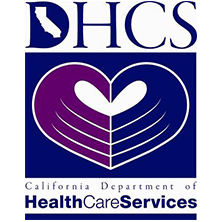As men are diagnosed with alcohol use disorder at almost twice the rate of women, the signs of alcoholism in women can often be difficult to find. This may result in the disease of addiction going untreated, leading to multiple health problems.
Extreme alcohol use can cause exhaustion and short-term memory loss, as well as weakness and paralysis of the eye muscles.
More seriously, however, are liver disorders, such as cirrhosis, which is the irreversible and progressive annihilation of liver tissue.
What is Alcohol Use Disorder?
Alcohol use disorder can be defined as a problematic pattern of alcohol use leading to mental illness and compulsive behavior. As addiction is a physical dependence with compulsion symptoms, the signs of alcoholism in women can be difficult to see.
Symptoms of Alcoholism
Signs of alcoholism can begin with heavy use. Abuse and dependence are the general labels used to explain consumption practices. Problems with drinking suggest the use of alcohol beyond the point where it causes physical, social or moral impairment and destruction to the individual.
Problematic Alcohol Use in College
During college years it is very common for students to consume alcohol on the weekends and sometimes during the week. Because alcohol is readily available and usually present at every college party, drinking can become the norm.
Social drinking on the weekends is one thing, but many take it much farther than this. When students get into the habit of abusing alcohol to get drunk on a consistent basis, a problem begins, and signs of alcoholism can be seen.
Abuse and Dependence
Abuse and dependence are defined as a preoccupation with the consumption of alcohol and a physical desire to consume alcohol. In addition to these signs of alcoholism in women and alcohol abuse in women, there are four specific symptoms:
Craving
A strong need or urge to drink and a loss of control
Loss of Control
Drinking more than planned or not being able to cut down or control alcohol consumption
Physical Dependence
Not being able to stop drinking once drinking has begun
Withdrawal Symptoms
Nausea, sweating, shakiness, or anxiety after stopped drinking
Neglecting Responsibilities
A woman struggling with an addiction to alcohol may begin to neglect work or family obligations in an effort to manage their addiction and prevent withdrawal
Tolerance
The need to drink greater amounts of alcohol to feel drunk
Drinking Regardless
Regardless of dangerous situations, consequences, relationship problems, health issues, or legal issues
The cravings to consume alcohol can be as strong as a need like hunger. This craving can lead to continued drinking despite serious health and legal problems.
Alcoholism Warning Signs
There are a few ways to identify the possible signs and symptoms of an alcohol use disorder, including:
- Regular blackouts
- Leaving responsibilities unfulfilled due to alcohol
- Making alcohol a central part of socialization
- Lying about drinking habits
Physical Effects in Women from Alcohol Abuse
The physical health signs of alcoholism in women are extensive and may be visible to friends and family, but most are detected by physicians, these include:
Gastrointestinal problems:
These problems as a result of chronic alcohol use include gastritis, which is damage to the stomach lining.
Liver damage:
Physical signs of liver damage include yellow skin and eyes (jaundice) and swollen legs and ankles. Long term liver damage can result in cirrhosis of the liver.
Menstruation issues:
Drinking heavily can impact fertility. Menstruation may stop or become irregular due to alcohol use, or women may fall into an early menopause. This is because of alcohols effect on a woman’s hormonal cycle.
Pancreatic damage:
The pancreas helps reduce the hormones that regulate metabolism. Chronic alcohol use can create long-term damage.
Brain damage:
These is an increasing awareness that long-term alcohol use is connected to brain degenerative disorders such as dementia and Alzheimer’s.
Heart damage:
Excessive drinking can lead to high blood pressure and damage the heart increasing the risk of heart failure or stroke.
Does my Doctor Know How Much I Drink?
It can be hard for doctors to decide which patients to monitor for alcoholism as some signs and symptoms could be due to other illnesses.
Doctors ask a series of questions about drinking habits in order to get an indication of the amount of drinking. Someone struggling with an addiction to alcohol may find it hard to share how much alcohol they are actually consuming.
Blood tests measure the size of red blood cells, which increase with long-term alcohol abuse. Tests that show liver damage can also assist in diagnosing a patient with alcohol abuse.
If you are struggling with an addiction to any substance, your doctor is a safe place to start a conversation.
Risk Factors for Alcoholism in Women
Signs of alcoholism in women typically include drinking more than 12 drinks per week. Drinking alone is a single risk factor that can contribute to alcoholism. Other risk factors include the following:
Risk Factors
- Age: People who start drinking in their teens are at a higher risk of alcoholism and alcohol abuse.
- Genetics and Family History: A person is more likely to develop alcoholism if their parents are alcoholic or abused alcohol.
- Emotional Disorders: Being severely depressed or having anxiety places one at a greater risk of abusing alcohol. Also, adults with ADHD may be more likely to become dependent or abusive.
How to Prevent Addiction
The probability of addiction depends on the parents, friends and other role models in a persons life and at what age they began drinking alcohol.
A few tests that a person can perform are trying to avoid drinking out of habit and while bored and setting limitations on drinking before the day begin.
It is important to establish activities separate from drinking as drinking with friends and drinking heavily can encourage alcohol abuse.
There are different treatments available to help women struggling with alcohol abuse and alcoholism.
Treatment for Women with Alcohol Use Disorder
Treatment includes assessment, intervention, and outpatient series or therapy with possibly an inpatient stay if the patient is a danger to herself. A housing treatment begins with detoxification and withdrawal. This period can last for to seven days and delirium tremens (DT’s) or withdrawal seizures may occur. After detox, emotional support is given.
This consists of individual therapy and counseling, support from respective recovery groups, helping to combat active addiction and alcoholism. Most importantly, acceptance of the fact that one is addicted and unable to control their drinking is necessary for effective treatment.
Support groups, therapy, and Alcoholics Anonymous meetings can help women abstain from drinking and continue with a fulfilling sober life.
START YOUR JOURNEY WITH
SAFE HARBOR HOUSE
(310) 861-4157
Contact Us Today
Verify Your Insurance




